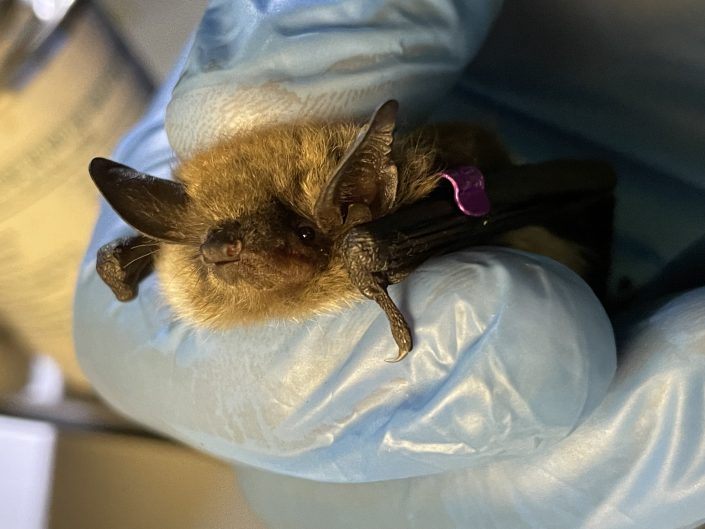CWF In The News: Bats and summer nights – perfect together!
by, Ethan Gilardi, Wildlife Biologist

I recently had the chance to speak with the New Jersey Conservation Foundation about CWF’s work with bats.
We discussed how bat populations are recovering from White-Nose Syndrome, the difficulties of studying such an elusive species, the projects currently being undertaken by CWF to help our bats, and what makes our bats a special and irreplaceable part of New Jersey’s wildlife community.
We’d like to thank Sandy Perry for conducting this wonderful interview and Michele S. Byers for including us as a part of New Jersey Conservation Foundations’ The State We’re In.
Check out the excerpt below and continue reading this and many other great articles on njconservation.org.
Sit outside on a summer evening around sunset and look up. If you’re in an open area with nearby woods, you may be treated to a dazzling aerial display of bats hunting for flying insects.
“They’re endlessly fascinating,” said Ethan Gilardi, a bat biologist with the nonprofit Conserve Wildlife Foundation of New Jersey. “They’re fun fliers, with all their diving and weaving and hairpin turns.”
Besides being interesting to watch, bats provide priceless insect control services in a state that jokingly refers to the mosquito as its state bird. “A single little brown bat can eat 3,000 insects a night,” noted Ethan. “They eat every kind of insect pest you can think of.”
But many of New Jersey’s bats are struggling to survive. Fifteen years ago, a fungus attacked hibernating bats, leading to a disease known as white-nose syndrome. The disease disrupts hibernation, causing bats to use up their vital energy needed to survive the winter. White-nose wiped out most of the bats in the Myotis genus: little brown bats – once our most widespread species – and northern long-eared bats.
Click Here To Continue Reading.
Discover more from Conserve Wildlife Foundation of NJ
Subscribe to get the latest posts sent to your email.